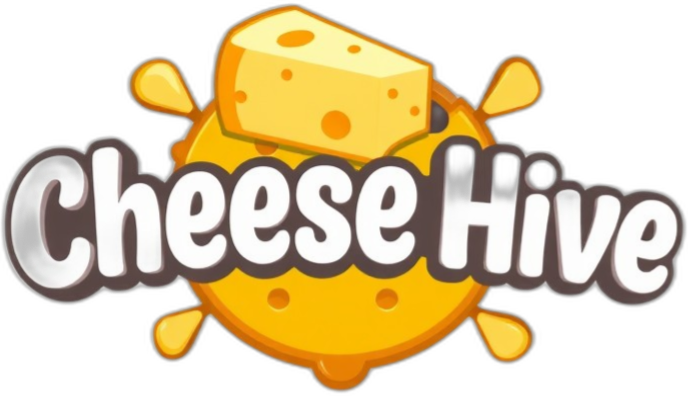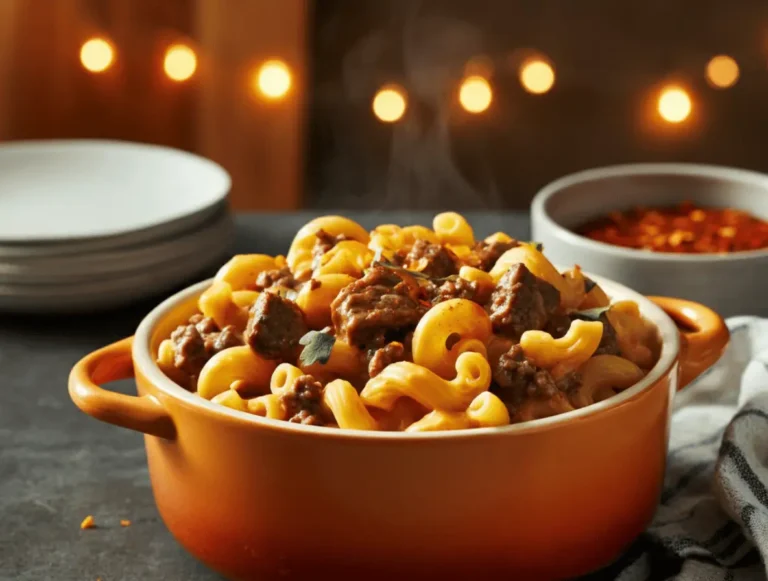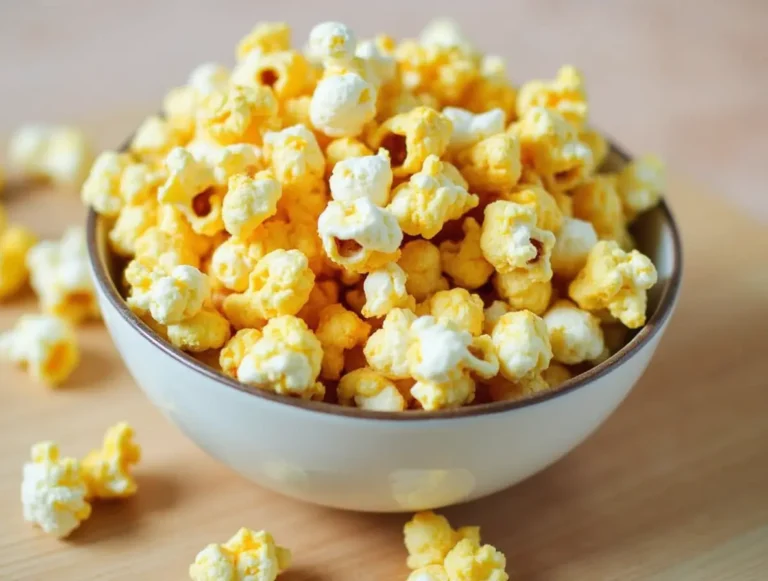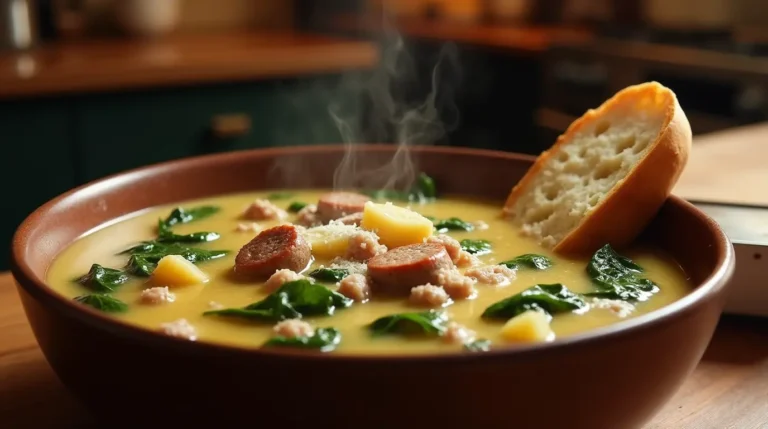Cheese Not Sticking to Pizza? 5 Brilliant Melting Fixes!
Ever made the perfect pizza, only to see the cheese slide off? This is a common problem for both home and professional bakers. But don’t worry, there are ways to fix it. You can make your cheese stick to the crust like glue.
I’ve had my share of cheese-sliding issues. It’s a big problem that can mess up a great meal. But after trying many things, I found some solutions. Now, my cheese stays put, even with lots of toppings.
Table of Contents
The Perplexing Problem of Sliding Cheese
For pizza fans, nothing is more annoying than cheese that won’t stay on the pizza. This issue comes from a few main reasons. These reasons make it hard for the cheese to stick to the crust.
Too Much Sauce Creates a Watery Layer
Using too much pizza sauce can make the dough’s surface wet. This makes it tough for the cheese to stick well. As a result, the cheese slides and clumps, ruining the pizza.
Anti-Caking Agents Hinder Melting
Pre-shredded cheeses often have anti-caking agents. These agents stop the cheese from sticking together in the bag. But, they also mess with the cheese’s melting. This leads to a pizza with a crumbly, uncooperative cheese.
Finding the right balance with pizza sauce and cheese is key. It ensures the cheese sticks well and the pizza tastes great.
Selecting the Right Cheese for Optimal Melting
Choosing the right cheese is key to a perfectly melted pizza topping. Fresh, low-moisture mozzarella is the top choice. It stretches well and forms a smooth layer on the crust.
Fresh, Low-Moisture Mozzarella: The Champion of Meltability
Mozzarella is famous for melting well, making it a favorite for pizza. Look for full-fat, high-moisture mozzarella for better meltability. Its high moisture and moderate acid make it melt smoothly, creating a cohesive layer on the crust.
Other cheeses also melt well. Fontina, provolone, Gruyère, and Gouda are known for their melting abilities. They have unique flavors and textures that enhance their melting properties.
| Cheese Variety | Melting Characteristics | Best Uses |
|---|---|---|
| Mozzarella | High moisture content, moderate acid development, excellent meltability | Pizza, baked pasta dishes |
| Cheddar | Great meltability when young, can become oily and grainy when aged | Sandwiches, baked dishes |
| Fontina | Buttery and smooth, ideal for sauces and melting into dishes | Baked pasta, pizza |
| Provolone | Sharp flavor, suitable for sandwiches and baked dishes | Sandwiches, baked dishes |
| Gruyère | Nutty and grassy flavor, becomes creamy when melted | French onion soup, baked dishes |
By choosing the right cheese, like fresh, low-moisture mozzarella, your pizza will have a perfectly melted topping. This ensures a delightful texture and flavor.
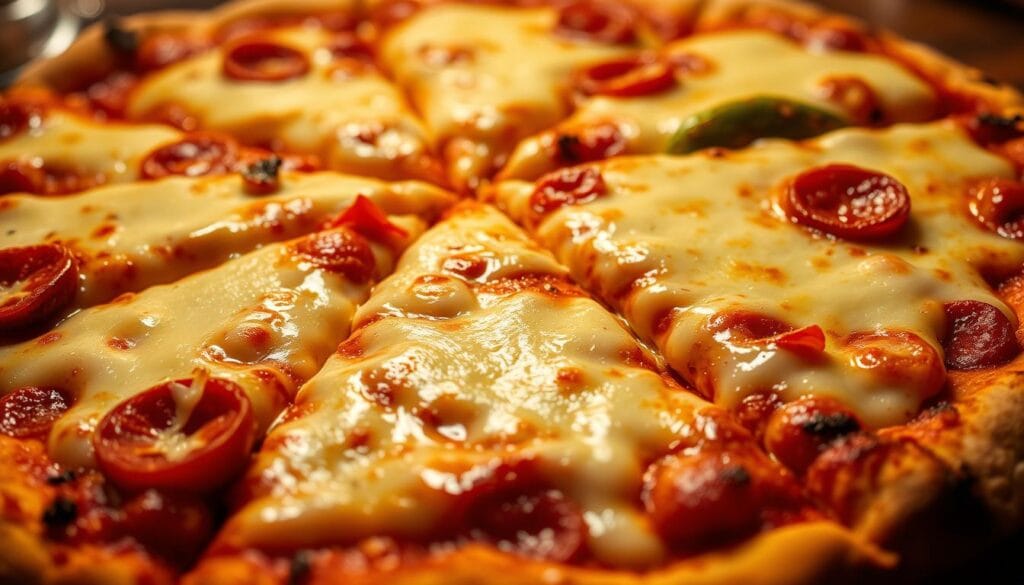
Balancing the Sauce for Cheese Adhesion
Creating cheese that sticks to pizza perfectly is all about balance. The key to creating cheese not sticking to pizza lies in the consistency of the tomato sauce you use.
Simmer to Reduce Moisture and Achieve the Perfect Consistency
If the tomato sauce is too wet, it can stop the cheese from sticking to the dough. To fix this, experts suggest simmering the sauce to remove excess moisture. This makes the sauce thicker and more flavorful.
Simmering the sauce helps evaporate water, leaving a thicker, more concentrated flavor. This is important for the pizza cheese to stick to the pizza dough. The sauce should be smooth and not too wet or thin.
Remember, the sauce’s consistency is key, along with the pizza baking temperature. With the right sauce, you’ll make a delicious, cheesy pizza.
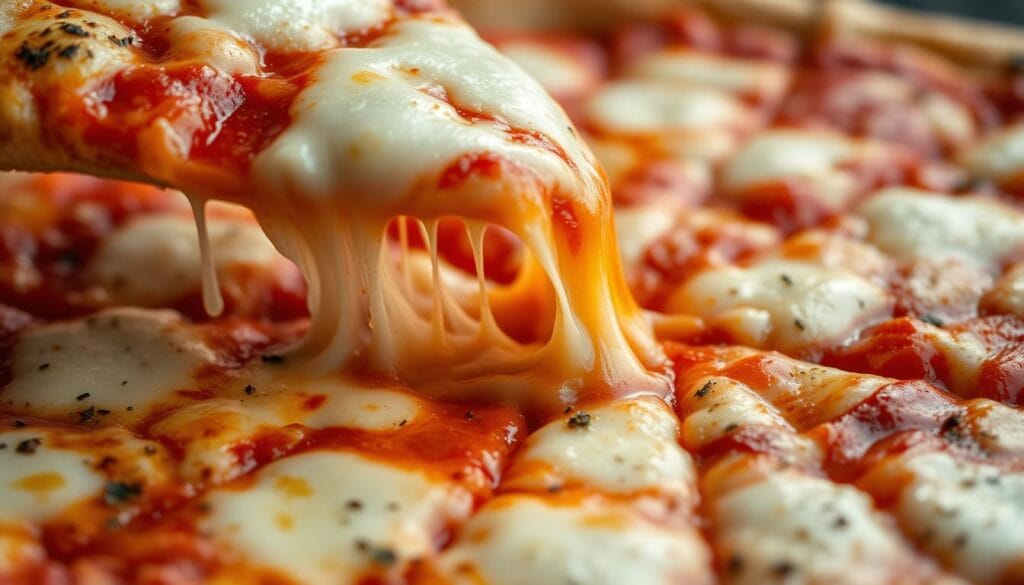
Layering Cheese on Your Pizza for Better Sticking
Creating the perfect pizza, especially when creating cheese not sticking to pizza, starts with how you layer your ingredients. Many think a single, thick layer of cheese is best, but a smart layering approach can make a big difference in keeping your cheese in place.
Begin with a light sprinkle of cheese on the dough. Then, add your toppings, and finish with a thicker layer of cheese on top. This method creates a melty barrier that keeps everything in place. It prevents your cheese from sliding off, leaving you with a pizza that’s just right.
The best temperature for baking a pizza crust is between 475 to 500 degrees Fahrenheit. Aim for a baking time of about 12 to 15 minutes. By layering the cheese this way, the bottom layer melts and sticks to the crust. The top layer gets all gooey, adding a wonderful texture to your pizza.
| Ingredient | Measurement |
|---|---|
| Instant Yeast | 2 ¼ teaspoons |
| Water | 1 cup |
| All-Purpose Flour | 2 cups |
| Salt | ¼ teaspoon |
| Olive Oil | 1 tablespoon |
| Tomato Sauce | ⅓ cup |
| Mozzarella Cheese | 3 ounces, shredded |
So, when making your homemade pizza, start with a light cheese layer. Add your toppings, and then a generous cheese layer on top. This simple trick will make your pizza cheese adhesion and pizza cheese texture perfect.

cheese not sticking to pizza
Ever had cheese slide off your pizza right after baking? You’re not alone. This problem can be frustrating, but there are easy fixes. With a few tips, your cheese will melt perfectly, making every bite a joy.
The main reason cheese doesn’t stick is pizza dough hydration. If your dough is too wet or not kneaded enough, it’s too slick. You want dough that’s just right, with the right amount of moisture and kneading.
When creating cheese not sticking to pizza, the baking temperature and preheating of your pizza stone or baking sheet matter too. If it’s not hot enough or the surface isn’t preheated, cheese won’t melt well. Make sure your oven is at 450°F (232°C) and preheat your stone or sheet for 30 minutes before baking.
The type of cheese you choose is also important. Use fresh, low-moisture mozzarella. It melts better and sticks to the crust than other cheeses.
| Factors Affecting Pizza Cheese Sticking | Optimal Conditions |
|---|---|
| Dough Hydration | Just the right amount of moisture, with thorough kneading |
| Baking Temperature and Preheating | Oven at least 450°F (232°C), pizza stone/sheet preheated for 30+ minutes |
| Cheese Type | Fresh, low-moisture mozzarella with higher oil content |
By focusing on these key areas, you can keep your cheese in place. This will make every slice of pizza a delightful experience.
Parboiling Moisture-Rich Toppings
Creating the perfect pizza can be tricky, especially when dealing with watery toppings. Mushrooms and bell peppers, for example, can release a lot of juice. This can make the pizza cheese slide off the crust, ruining the pizza.
Preventing Watery Pools on Your Pie
To solve this, pre-cook, or parboil, these wet toppings before adding them. This step removes some of the excess water. It makes the toppings drier and helps the pizza cheese texture and pizza dough hydration stay intact.
- Slice or chop your mushrooms, peppers, and other watery toppings into bite-sized pieces.
- Bring a pot of salted water to a boil, then add the toppings and let them parboil for 2-3 minutes.
- Drain the toppings thoroughly and pat them dry with paper towels to remove any remaining moisture.
- Add the pre-cooked toppings to your pizza and bake as usual, confident that they won’t create a watery mess on your pie.
By parboiling your wet toppings, you can make a pizza with cheese that sticks to the crust. Your toppings will be evenly spread, making your pizza perfect.
Anchoring the Cheese to the Crust
To keep your pizza cheese from sliding, make sure some cheese touches the dough near the edges. This direct contact between the cheese and dough helps the cheese stick to the crust. It keeps the cheese in place.
When you’re making your pizza, sprinkle some mozzarella or other cheese right up to the dough’s edge. This “anchoring” of the cheese makes a strong bond. It stops the cheese from sliding off when you slice and serve.
Also, the right pizza dough hydration helps with cheese adhesion. If the dough is too dry, the cheese can’t cling well. But if it’s too wet, the cheese slides off because of the slippery surface.
| Technique | Benefit |
|---|---|
| Placing cheese directly on the dough near the edges | Anchors the cheese to the crust for better adhesion |
| Maintaining proper pizza dough hydration | Provides the right surface texture for cheese to cling to |
Using these simple techniques ensures your pizza cheese stays put. This makes your pizza look great and taste amazing.
Using Grated Parmesan as a Binding Agent
Making the perfect pizza with cheese that sticks to the crust can be tricky. Celebrity chef Giada De Laurentiis has a clever trick. She uses grated Parmesan cheese as a binding agent for your homemade pizzas.
Just sprinkle a lot of grated Parmesan over the crust before adding toppings. The Parmesan acts as glue, making cheese and toppings stick. This improves cheese adhesion and boosts the pizza’s texture and flavor.
Giada De Laurentiis’ Trick for Coating Noodles with Cheese
Giada’s trick comes from her way of coating noodles with cheese. She sprinkles Parmesan over hot pasta, tossing until the cheese melts and sticks. This method works great for pizza too, making it look and taste amazing.
Adding this step to your pizza-making can solve the problem of sliding cheese. Say hello to a perfectly melted, evenly spread topping that enhances the crust and other flavors. Try this chef-inspired technique to elevate your homemade pizza.
Conclusion
In this article, we’ve looked at why cheese doesn’t stick to pizza and how to fix it. We’ve learned about the best mozzarella cheese and how to mix the sauce just right. We’ve also talked about layering cheese and using grated parmesan to help it stick.
Understanding how cheese melts and sticks is key. It’s all about the cheese’s moisture, oil, and the oven’s heat. By getting these right, your cheese will melt beautifully and stick to the crust.
So, when you make your next pizza, remember these tips. With a bit of care and the right methods, you’ll avoid cheese that slides off. Enjoy your perfectly cheesy pizzas!
FAQ
Why does cheese tend to slide off pizza?
Cheese slides off pizza for two main reasons. First, too much sauce makes the surface wet. This stops the cheese, which doesn’t like water, from sticking. Second, pre-shredded cheese often has additives that help it stay separate but make it hard to melt.
Is using glue to make cheese stick to pizza a good idea?
No, using glue on pizza is a bad idea. It’s not safe to eat. Instead, focus on the right sauce, cut toppings small, and use cheese that sticks well to the crust.
What type of cheese is best for ensuring the cheese stays put on the pizza?
Fresh, low-moisture mozzarella is the best. It melts well and sticks to the pizza. This cheese is key to keeping the cheese in place.
How can I balance the sauce consistency to help the cheese adhere better?
Use a thin layer of tomato sauce. Spread it evenly, leaving some crust exposed. If the sauce is too wet, simmer it to reduce moisture. This helps the cheese stick.
What technique can I use to help the cheese stay in place on the pizza?
Start with a light cheese sprinkle on the dough. Add toppings, then more cheese on top. This creates a barrier that keeps everything together.
How can moisture-rich toppings affect the cheese sticking to the pizza?
Toppings like mushrooms and bell peppers release moisture when cooked. This can make the pizza too wet, causing the cheese to slide. Par-cook these toppings and chop them small to prevent this.
How can anchoring the cheese to the crust help prevent it from sliding off?
Let some cheese touch the dough near the edges. This direct contact helps the cheese stick to the crust, preventing it from sliding.
What other trick can help hold the cheese and toppings together?
Sprinkle grated parmesan on the pizza. It sticks to the surface, helping to keep the cheese and toppings in place.
